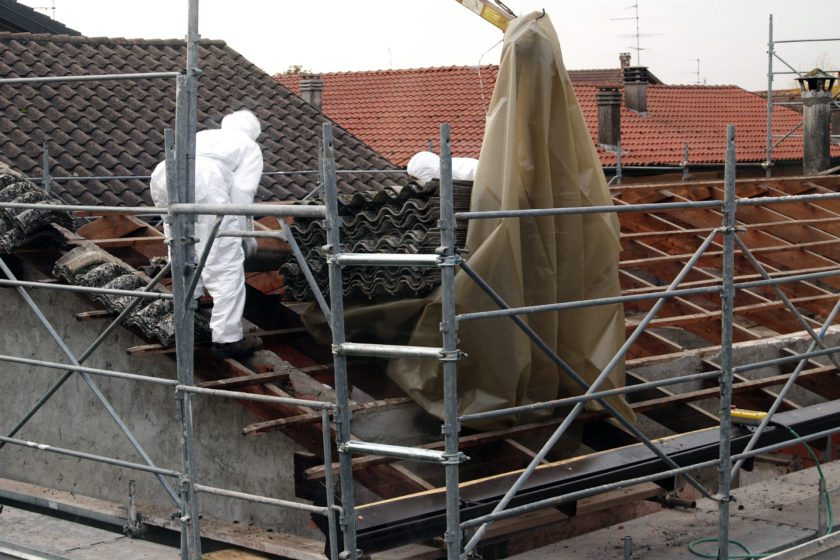Introduction
Asbestos is a toxic material that has been used in construction for many years. It is now known that exposure to asbestos can lead to serious health problems, such as mesothelioma and lung cancer. You should never attempt to remove asbestos yourself, as this could expose you and your family members to dangerous levels of airborne fibers. Instead, hire an experienced professional asbestos removalist who knows how best to handle this hazardous material safely and efficiently.
Asbestos in Construction
Asbestos is a naturally occurring mineral that can be found in the earth’s crust. It is a fire retardant and has been used in construction because of its strength, cheapness and heat resistance. It can be found in products such as cement sheets, roofing tiles, pipes, guttering and ceiling tiles.
Which construction materials may contain asbestos?
Asbestos can be found in many construction materials. Before the 1970s, asbestos was widely used as a fire retardant and to insulate building materials such as:
- Roofing and ceiling tiles
- Cement sheets and pipe lagging (insulation wrapped around piping)
- Some paints, sealants and adhesives
- Floor tiles (not all floor tiles contain asbestos)
Asbestos in Victoria, Australia
Asbestos was widely used during the construction industry in Victoria until the 1980s. Asbestos is a known carcinogen and can be released as tiny particles when it’s disturbed, creating dust that can be inhaled. Exposure to asbestos over time can cause cancer, but if you are exposed to asbestos for a short period of time, there is no need for concern.
In Victoria, buildings constructed between 1950 and 1985 have a high concentration of asbestos within their construction materials. The good news is that anyone who has been diagnosed with mesothelioma or another form of lung cancer related to asbestos exposure should be able to receive compensation from an insurance company or building owner if they were exposed while working on these buildings.*
- [This section includes links](https://www.victoriasmesotheliomahelpcentre.com/asbestos-victoria/)
Asbestos in pipes and guttering
- Asbestos pipe insulation.
- Asbestos guttering.
- Asbestos roofing materials, including:
- Asbestos roofing felt.
- Asbestos roof tiles.
- Asbestos roof cement, which is often used on flat roofs as an adhesive for tiles or felt and can contain asbestos in the form of asbestos fibres or asbestos dust and fumes during the application process.
Asbestos-containing materials are found in many places throughout your home, including your walls and basement floors where they could be lurking behind sheetrock or vinyl floor coverings, under floorboards (especially if you live in an older home), or even wrapped around pipes in the attic space above your ceiling!
Asbestos-containing ceiling tiles
- Ceiling tiles are made from asbestos-containing materials. In Victoria, Australia, many ceiling tiles are used in the construction of buildings such as homes, schools and offices.
- They are found in a wide range of places around the state. These tiles can be found in most types of buildings around Victoria, Australia.
Asbestos-containing bricks and blocks
Asbestos-containing bricks and blocks are common in older homes, and they can be used as internal walls and flooring. These materials are typically dark blue or brown in colour.
Asbestos-containing bricks and blocks can be identified by their blue colour:
Asbestos-containing wallboards and floorboards
Asbestos-containing wallboards and floorboards are a serious risk to health, and can be found in many homes.
Asbestos-containing wallboards and floorboards are a serious risk to health, so if you have any concerns about the presence of asbestos in your home, it’s important to talk to an accredited removalist as soon as possible.
Asbestos insulation boards (AIB)
Asbestos insulation boards (AIB) were used in many buildings, including schools, hospitals and commercial buildings. AIB is a type of building board that was laid on top of joists or studs to provide thermal insulation and fire protection. The board is usually made from fibre cement sheets with an asbestos filling between them.
Asbestos insulation boards should be removed by a professional asbestos removalist as they have the potential to release asbestos fibres if disturbed during demolition activities. It’s important that all workers involved wear protective clothing and equipment when removing AIB sheets from these types of buildings.
It is essential that you hire an asbestos removal specialist if you need your house to be cleared of all asbestos.
It is essential that you hire an asbestos removal specialist if you need your house to be cleared of all asbestos. A licensed asbestos removal specialist is the only one who can handle the disposal process, and they will know how to do so safely so that no one gets hurt or harmed.
If you want to get rid of asbestos in your home, it is very important that you follow all rules and regulations regarding how to do so safely. This way, both yourself and those around you will remain safe while handling this toxic material.
Conclusion
In conclusion, you should always be careful when doing renovations or building work in your home. If you suspect that there is any asbestos in the construction materials used, it’s best to hire an asbestos removal professional who can clear out all of this dangerous material for you.
If you are looking for a professional to do the Asbestos Removal from your property, simply call our friendly team on 0475 143 106 or email us on: asbestosgoneandclean@gmail.com!


